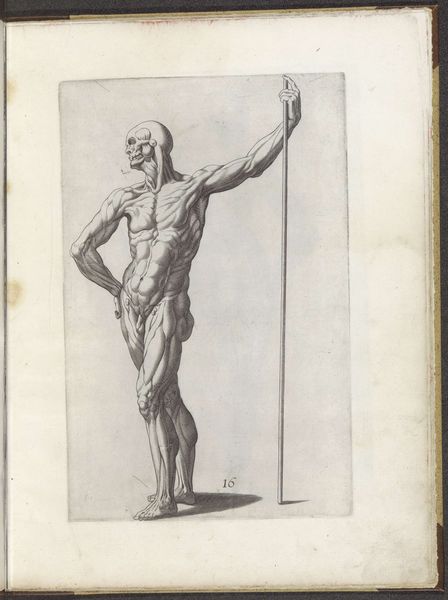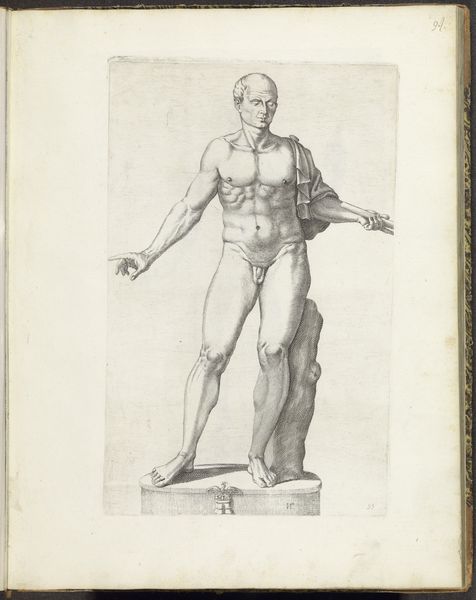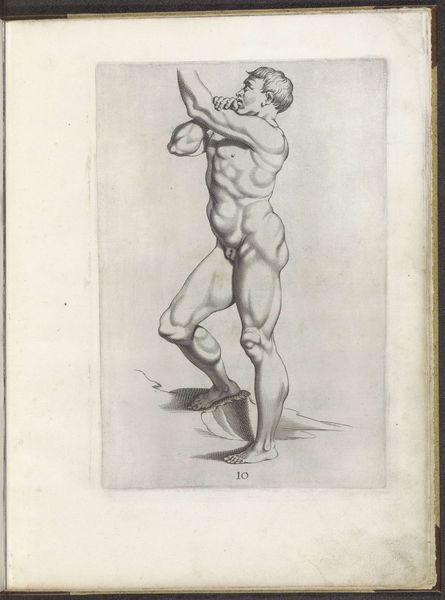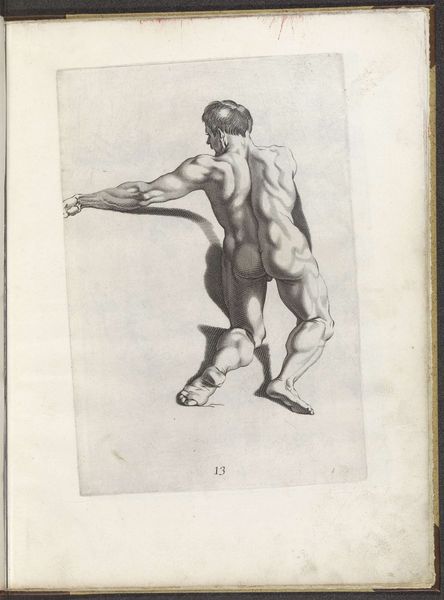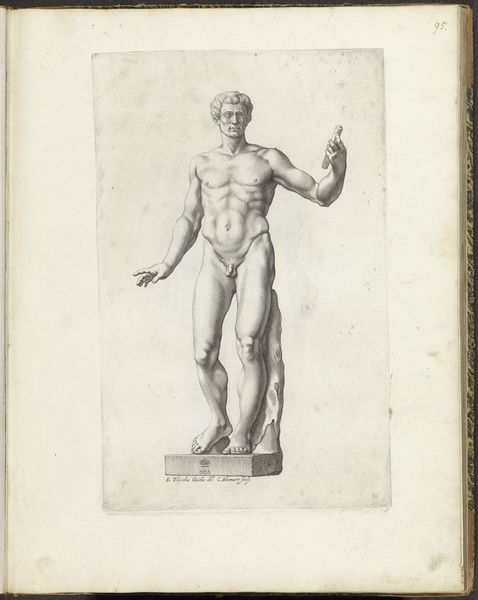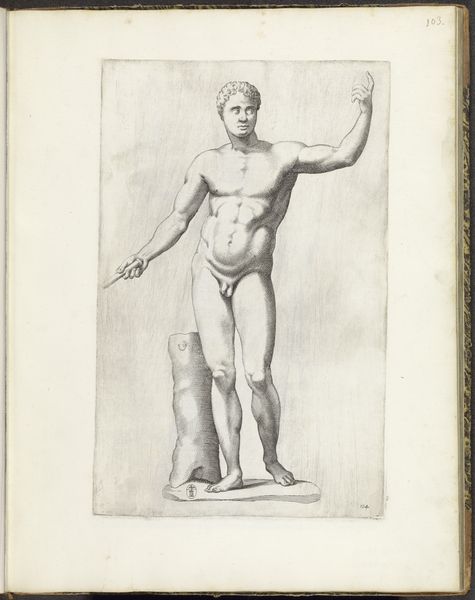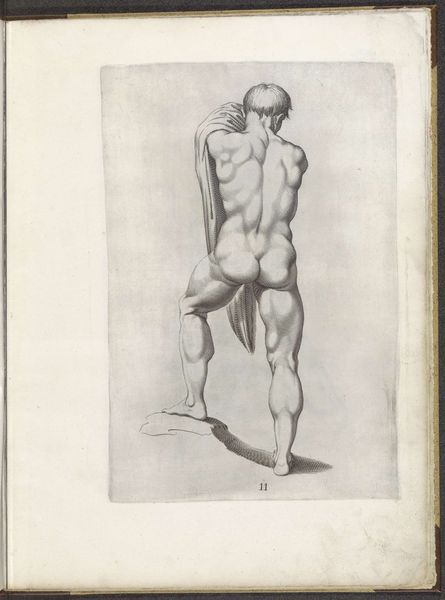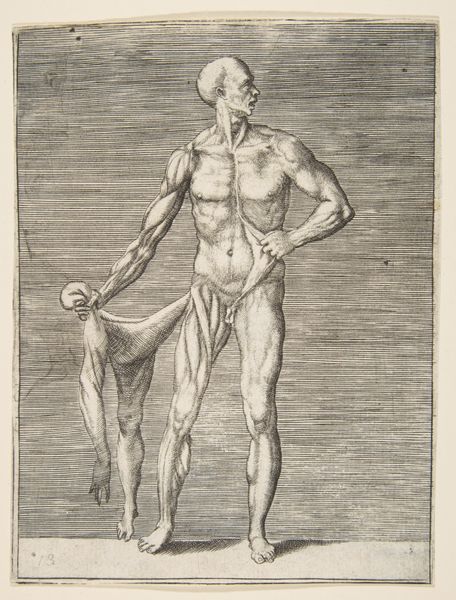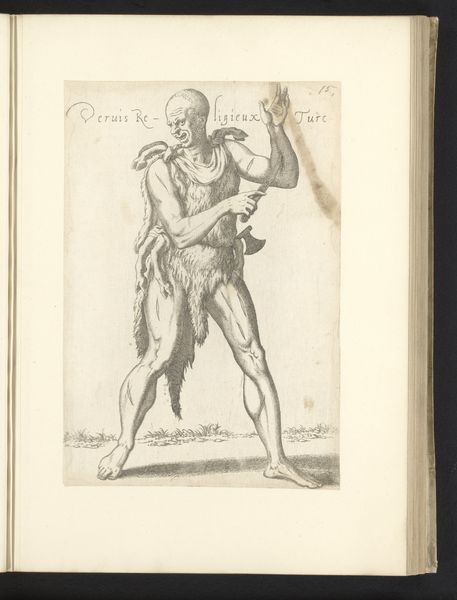
drawing, paper, ink, pencil
#
pencil drawn
#
drawing
#
figuration
#
paper
#
11_renaissance
#
ink
#
pencil
#
academic-art
#
nude
Dimensions: height 276 mm, width 186 mm
Copyright: Rijks Museum: Open Domain
Pieter de Jode the Elder made this écorché, or flayed figure, in the Netherlands around the turn of the 17th century. De Jode’s engraving gives us a rear view of a standing male figure with his skin removed to expose the muscles underneath. The écorché became a popular subject for artists during the Renaissance as a way to study human anatomy. These images were not just scientific illustrations; they reflected a broader cultural interest in the human body and its potential for perfection. The institutions of art, such as academies, promoted the study of anatomy as essential for artists seeking to depict the human form accurately. Artists looked at the bodies and proportions of classical sculptures as models of ideal beauty. But in an age of religious wars, the image of the suffering, flayed body was also freighted with social and religious implications. The historian's role is to consider this image in light of period medical texts, classical sources, and religious beliefs. Only then can we begin to understand the social conditions that shaped its production.
Comments
No comments
Be the first to comment and join the conversation on the ultimate creative platform.
